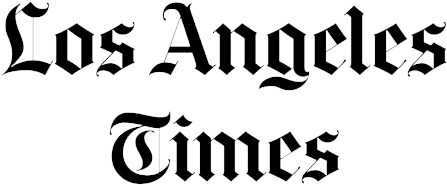Nutrition Facts Label: How to Understand, Use and Read Food Labels for Improving Your Health, Definitions and Guide
Nutrition facts label: basic information about how to read and understand food labels to improve your health.
Wanting to learn how to read a nutrition label (US)?
Below you will find a guide for understanding, using, and reading a nutrition facts label to improve your health.
The Food and Drug Administration (FDA) requires the Nutrition Facts label on most packaged goods and drinks. The Nutrition Facts label contains extensive information on the nutrient content of a food, such as the quantity of fat, sugar, salt, and fiber.
Knowing how to read food labels is especially crucial if you have a medical problem, such as high blood pressure or high cholesterol, and must adhere to a strict diet. It also allows comparing similar foods to determine which is healthier.
The more you practice reading food labels, the better you will get at utilizing them as a tool to create a healthy, balanced diet.
Start with the food label tool below. It makes understanding nutrition facts easy.
Each part of the food label is described in the example to assist you in decoding it.
How to Read
How to Read a Food Label for Basic Nutrient Information
Click any nutrient item on the food label below for basic nutrition facts and information.
* Percentage Daily Value based on a 2000 calorie diet.
Serving Size
Serving Size on Nutrition Facts Label
When reading Nutrition Facts Label, always refer to the serving size amount. Then evaluate how much you are eating compared to the amount listed. You may find that you are eating much more than the listed serving size.
Servings Per Container
Servings Per Container on Nutrition Facts Label
Servings per container tells us the number of helpings in the food package. In the example above, if you ate everything in the food container you would have consumed 3 helpings of the recommended serving size, 1/3 cup. Therefore, there are 3 servings in the above food package.
140 Calories
140 Calories for this Food Label
The total number of calories in one serving, 1/3 cup.
45 Calories from Fat
45 Calories from Fat for this Food Label
The total number of fat calories in one serving, 1/3 cup.
% Daily Value
% Daily Value on Nutrition Facts Label
The numbers shown under % Daily Value are based on a 2000 Calorie diet. Each number represents the percentage that one serving contributes to the dietary requirements of a certain nutrient. For example, 20g of carbohydrates, refer to the label above, contributes to 7% of the daily carbohydrate needs for a 2000 Calorie diet. However, unless you are following a 2000 Calorie diet, the % Daily Value should only be used as a reference.
Total Fat
Total Fat for this Nutrition Label, 5 Grams
The total number of fat grams in one serving, 1/3 cup.
Fat Facts:
1. Dietary fat is essential for proper health.
2. Carries fat soluble vitamins, A, D, E, K.
3. Fat provides 9 calories per gram. That is more than twice as many calories as protein or carbohydrates.
4. Dietary fat does not cause individuals to become obese, excess calories do.
For additional nutrition information, start on fat.
Saturated Fat
Saturated Fat for this Nutrition Label, 4 Grams
Fat is an essential nutrient that must be acquired through your diet for proper health. However, there are bad and good fats.
Bad fats are called saturated fats. Saturated fats remain solid at room temperature, and apart from coconut oil, and palm oil, they all come from animal sources. Consumption of saturated fats should be limited because they raise an individual's blood cholesterol and contribute to heart disease. Try to select foods with less than 3 grams of saturated fat per serving and limit your total intake to less than 10% of your total calories.
For additional nutritional information, start on fat.
Cholesterol
Cholesterol on Nutrition Facts Label
Cholesterol is a calorie absent substance in animal food sources. Research has determined that high levels found in an individual's blood contributes to heart disease. For that reason, intake should be limited to 300 milligrams a day for people without any history of heart disease and limited to 200 milligrams daily for individuals with elevated cholesterol levels. Men on average take in 320 milligrams a day while women consume 220 milligrams.
Sodium
Sodium for this Nutrition Label, 210 Milligrams
The total amount of sodium in one serving, 1/3 cup.
Sodium is a substance in table salt and typically used to preserve foods. Elevated levels have been found to increase blood pressure. Therefore, intake should be limited to 2400 milligrams a day. However, current intake for men is around 3850 milligrams and 2750 for women.
Protein
Protein for this Nutrition Label, 2 Grams
The total amount of protein in one serving, 1/3 cup.
Protein Facts:
1. Protein consists of chains of amino acids.
2. Protein is required for the growth and development of all existing body tissues.
3. Protein provides 4 calories per gram.
4. Most Americans receive enough protein in their dietary habits.
Start here for your specific protein needs.
Total Carbohydrate
Total Carbohydrate for this Nutrition Label, 20 Grams
The total amount of carbohydrates in one serving, 1/3 cup.
Carb Facts:
1. Should provide the most calories in your diet, 50% -60%.
2. Carbohydrates are the body's preferred energy sources.
3. Carbohydrates yield 4 calories per gram.
4. Regulates cellular fluid balance.
5. Main sources should come from fruits, grains, and vegetables.
For additional nutrition information, start on carbohydrates.
Dietary Fiber
Dietary Fiber for this Nutrition Label, 0 Grams
The total amount of fiber in one serving, 1/3 cup.
Fiber is an indigestible complex carbohydrate. Various forms have been proven to decrease cholesterol levels, slow sugar absorption, and positively affect the rate of digestion. The recommended amount is 25 grams a day for men and women. However, most Americans do not even consume a fraction of that.
Sugars
Sugars for this Nutrition Label, 11 Grams
The total amount of sugar in one serving, 1/3 cup.
Currently, no standard reference exists for sugar consumption. In addition, sugar amounts listed on Nutrition Facts Label include added sugars and natural sugars, ex. fruit, milk. For a more accurate picture, to determine if sugar is added, refer to the ingredients added at the bottom of the food label.
A good guideline to follow, try to limit added sugars to no more than 10% of your total calories.
For additional nutritional information, start on sugar and carbohydrates.
Vitamins and Minerals
Vitamins and Minerals on Nutrition Facts Label
The percentage listed is the amount that one food serving meets the RDA's daily recommendations for a vitamin or a mineral. Calcium, Iron, Vitamin A and Vitamin C are the only nutrients that require listing. The FDA has determined that these four nutrients are essential for a proper diet plan. Try to consume 100 percent of each.
For additional nutritional information, start on vitamins and minerals.
Help Me
The Best Meal Plan App
Using the latest science and research, the team at changingshape.com offer plans developed by certified nutrition and fitness professionals that shape exercise and meal plans based on the specific calories and nutrients a body needs to achieve real results. Join the changingshape.com calorie counter app free today.




